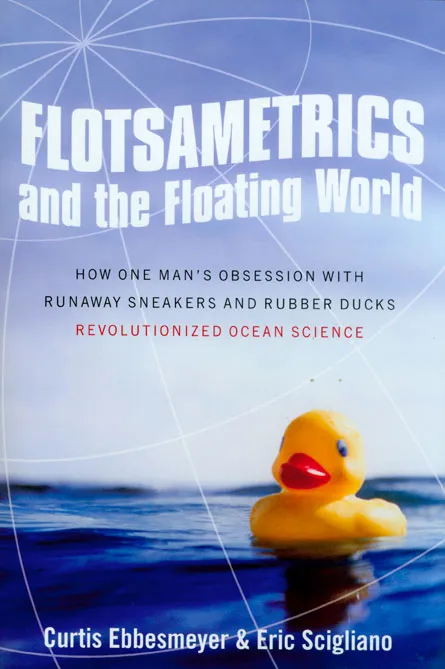Book Review: Flotsametrics and the Floating World by Curtis Ebbesmeyer and Eric Scigliano
Review by Sid Perkins
Buoyant items that end up in the sea — from tennis shoes to tree branches — drift at the mercy of winds and ocean currents, sometimes for thousands of miles. Seafarers have analyzed such debris, called flotsam, for centuries: Noticing odd items washed up on European beaches led Vikings to new harbors and Columbus to discover the New World, the authors reveal.
Today, scientists recognize flotsam as a tremendous source of scientific data. As researcher Curtis Ebbesmeyer and science writer Eric Scigliano recount, beachcombing is a poor man’s oceanography. By knowing when and where a beachcomber stumbled upon an item, as well as when and where that item had entered the water, scientists can divine information about oceanic swirls of all sizes, from small eddies that spin off the Gulf Stream to looping, sea-spanning currents called gyres.
Flotsametrics is a captivating memoir chronicling Ebbesmeyer’s journey into the floating world, from his childhood fascination with water to his professional studies of currents and tides. In the book’s final chapters, the authors describe a kind of flotsam that would have been unrecognizable to early seafarers: plastic trash.
Many of the items floating within the ocean’s vast “garbage patches” — a term Ebbesmeyer coined in the 1990s — are plastics that contain potentially harmful chemicals and may not decay for hundreds of years.
For better or worse, every piece of flotsam has a tale to tell, Ebbesmeyer contends. Any beachcomber willing to pay attention can help unravel the ocean’s story.
Smithsonian Books/Collins, 2009, 286 p., $26.99
